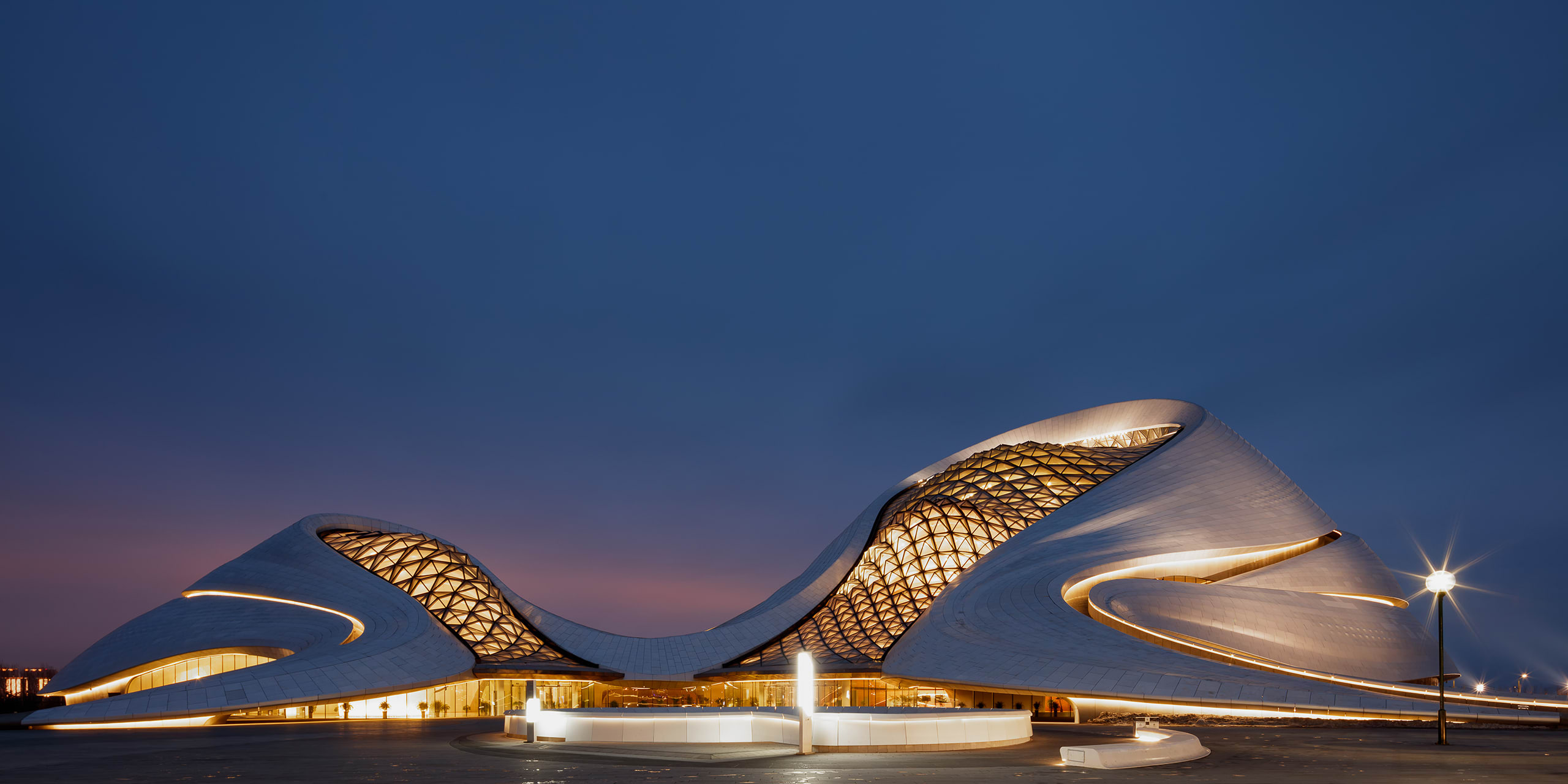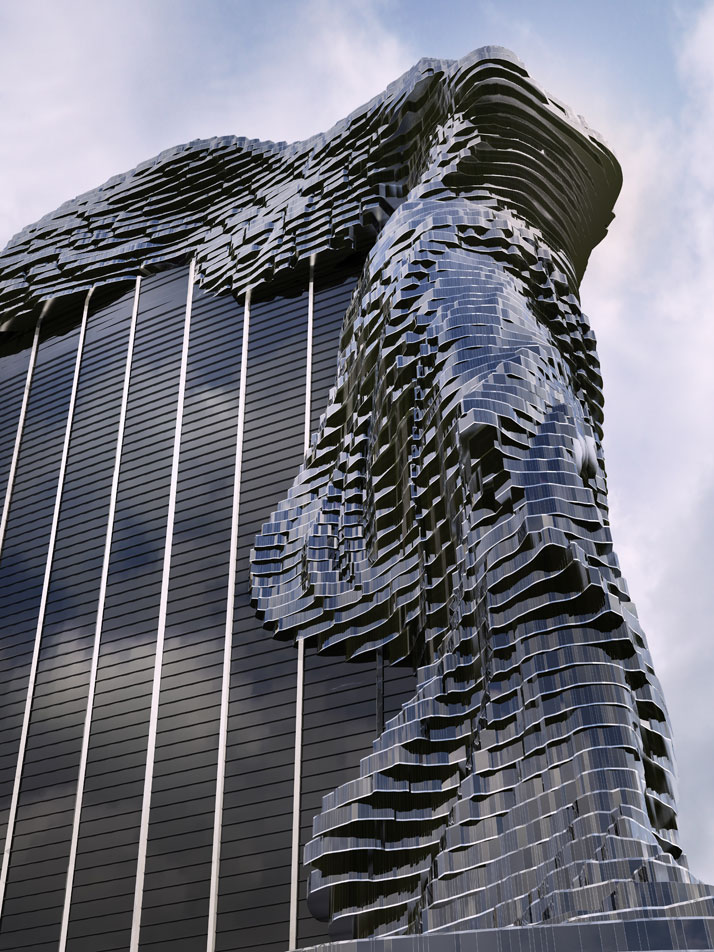Harbin Opera House
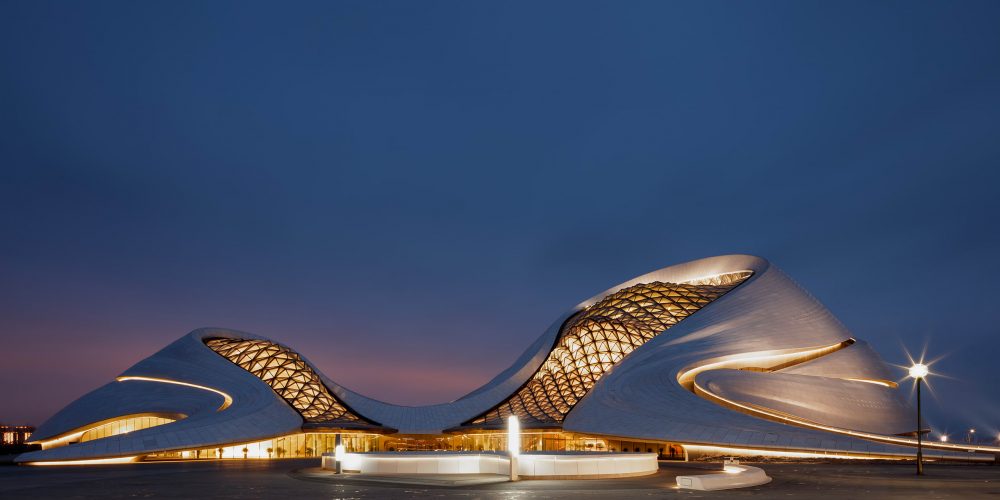
Rising above the snow-capped mountains and untamed wetlands of Harbin, dubbed as northeastern China’s Ice City, lies an architectural metaphor of sinuous ice formations sculpted over by nature.
Designed by Chinese-American studio MAD Architects, the Harbin Opera House emerged as the focal point of Harbin Cultural Island – a major new arts complex equipped with an opera house, a cultural center, and a surrounding wetland landscape along the Songhua River.
Undulating curvilinear forms were derived from the force and spirit of the northern city’s untamed wilderness and frigid climate.
Divided into a three-petalled floor plan, the building radiates into two concert halls and a huge public plaza – all wrapped in a shimmering, silvery metal skin. Inside, the grand theater can accommodate up to 1,600 spectators, while its more intimate counterpart can house an audience of 400 at once. Forming the third petal of its 79,000-sqm floor plan is the public plaza, perfect for outdoor performances once its paved surface melts into the snowy context.
The fluidity of its exteriors continues throughout its interiors. Upon entering the grand lobby, visitors are greeted with a billowing lattice structure below a glass atrium supported by lightweight diagrid frames. Emitting a much-needed warmth amid icy interiors is the immense wooden massing sculpted from Manchurian Ash, emulating a gently-eroding wooden block.
Juxtaposing the introverted approach of the grand theater is a smaller theater engulfed in soundproofed glass walls, offering spectacular views of the immediate landscape. Undulating walls with ripples made even more dramatic as daylight pierces through it softens an otherwise rectangular plan.
While there exists a public plaza to host outdoor performances and activities inside the project, the opera house is rounded by an outdoor roof deck that primarily serves as a public observation platform and a secondary exterior performing pod.
Guided by the philosophy of treating architecture as a landscape by itself, MAD Architects surpassed the complex opera house typology by creating a deep emotional bond between the environment, architecture, and its people; where users are perceived as performers instead of mere visitors. Both theatrical yet adaptive in nature, the sculptural boldness of Harbin Opera House embodies the synergy between the arts, culture, and local identity – breathing life into the harsh climate of the northeast.
- China
- MAD Architects
- http://www.i-mad.com/work/harbin-cultural-center/?cid=4


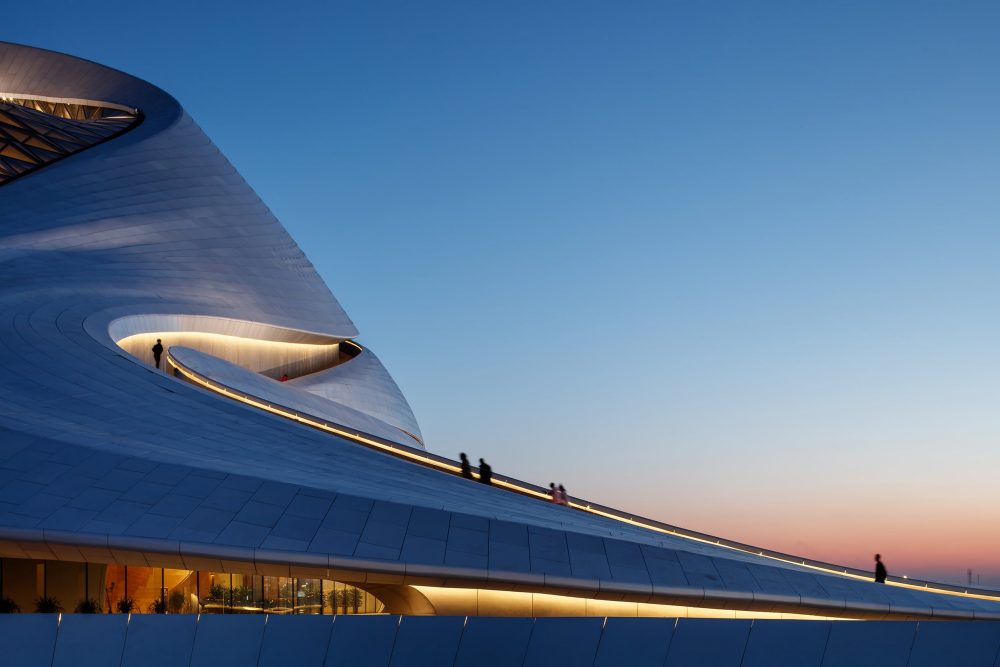
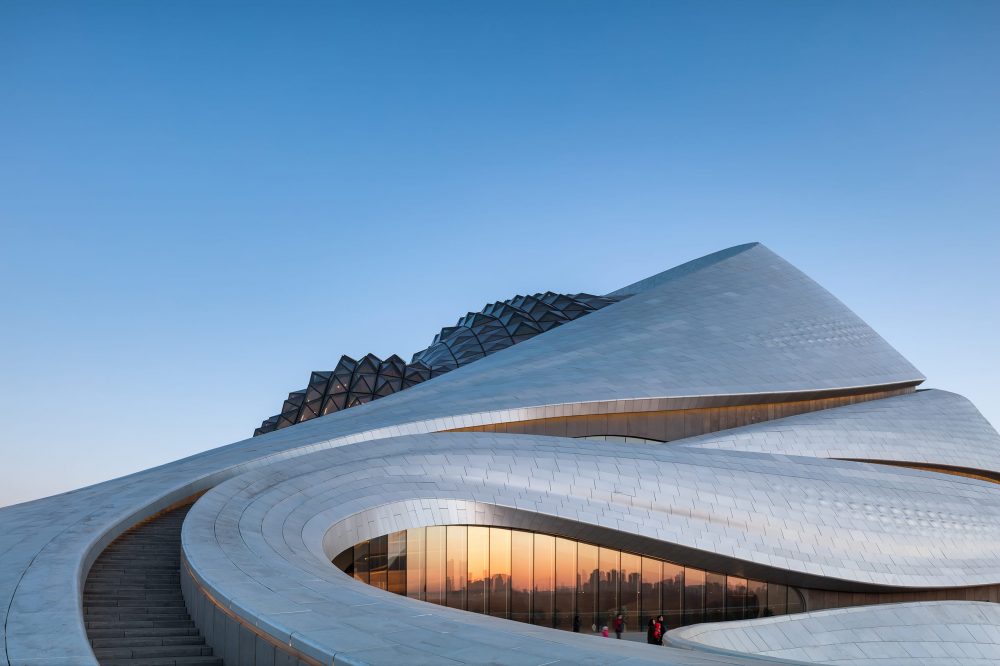

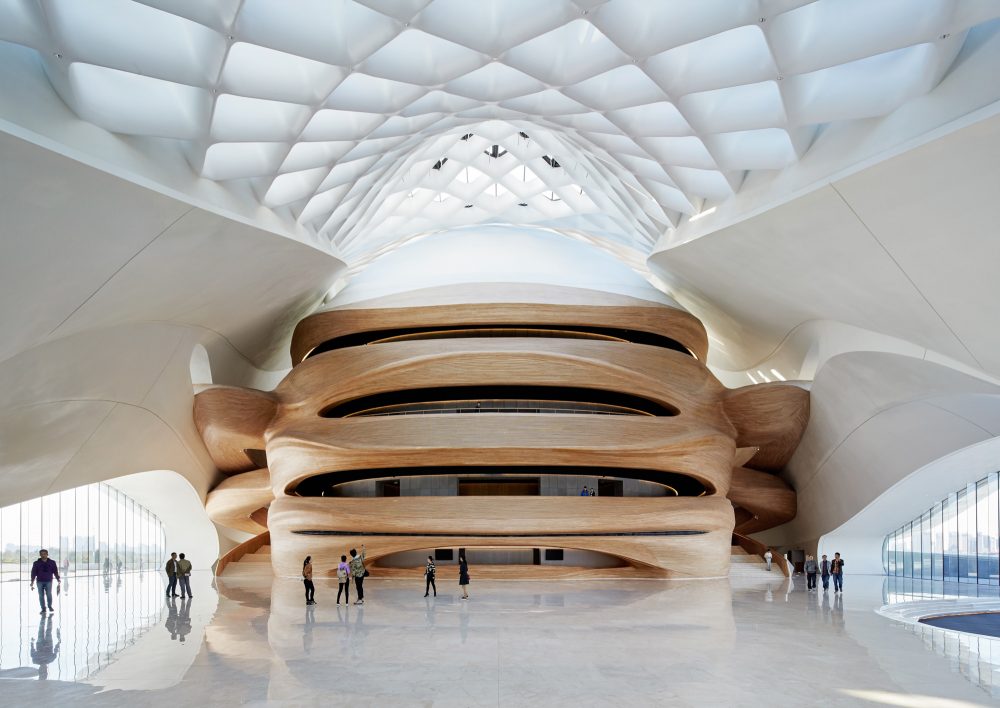
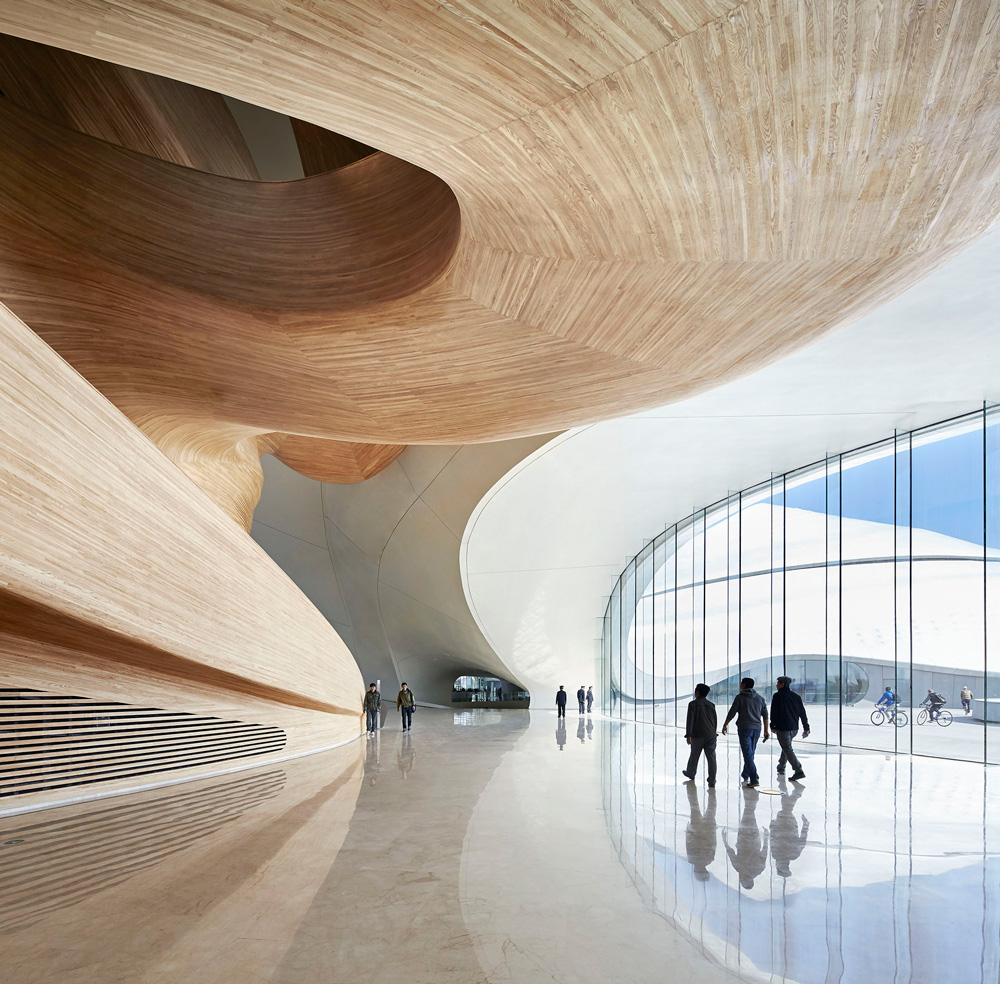
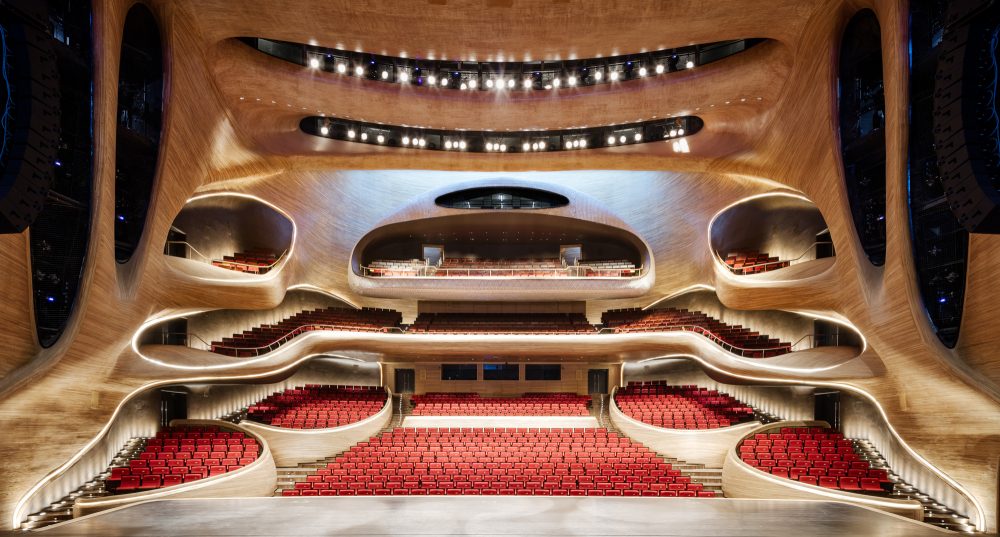
Category Cultural
